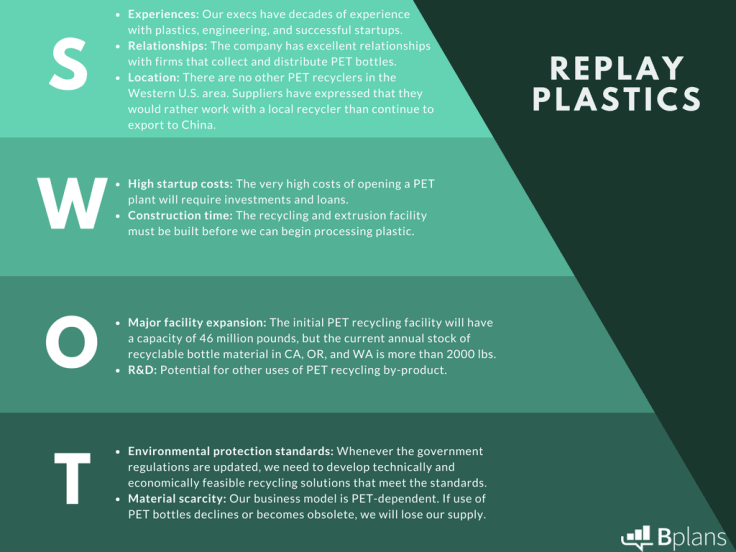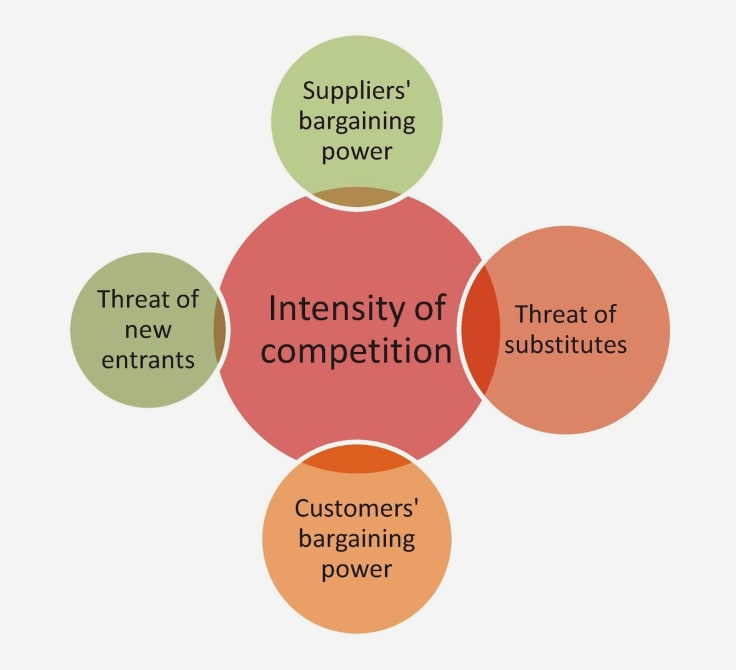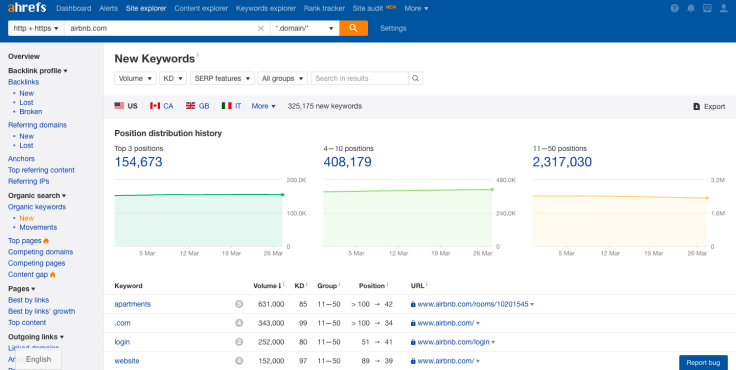Showing top 0 results 0 results found
Showing top 0 results 0 results found

You may have already started reaching out to potential partners or you’re about to do it. You’ve sent a few emails, made a few calls and registered for a partner marketing program, but you can’t seem to get the ball rolling. Partnerships are not the easiest thing to undertake, so you may need to act quickly and take a few steps back.
It may be that your venture is simply not ready for a partnership (I will write about on how to assess that in one of my future posts), but it’s also possible that you haven’t covered all bases while preparing for collaborating with other companies.
In today’s post, I will help you establish the basics you need to have at the ready when approaching potential partners.
Let’s dive in.
1. Know thyself
As I’ve mentioned in my last post, knowing what your company’s strengths and weaknesses are is the key to making or breaking it. Establishing those early into your business journey will help you not only find a market fit faster (especially if youuse this method to analyze your competitors too) but also improve your marketing and hiring strategy.
You may be wondering how you can conduct an analysis of your business, so let me list a few most popular techniques that will bring value to your business:
- SWOT (Strengths, Weaknesses, Opportunities, Threats) analysis
- PEST (Political, Economic, Socio-cultural and Technological factors) analysis
- Porter’s Five Forces
What are these exactly and how you can use them in your business?
SWOT analysis (along with its sibling methods, including SOAR [Strengths, Opportunities, Aspirations, Results], SCOC [Strengths, Challenges - Internal, Opportunities, Challenges - External] and SOPA [Strengths, Opportunities, Positive Actions] is probably the most popular when it comes to business analysis techniques. Its popularity is related to the high accuracy and versatility of this method.
Here’s an example of a SWOT analysis conducted by Tim Berry for a recycling company, Replay Plastics which may give you an idea how to apply this method to your own business:

PEST (including its variations: STEEP [PEST + Environmental factors], PESTEL [STEEP + Legal factors, LONGPEST [Local, National, Global factors + PEST) will be great for all entrepreneurs who plan to expand their business on a global level and need tools that will help them analyze it from a broader perspective. It’s also important to remember that PEST focuses primarily on the external (macro) factors, in opposition to a more internal focus in the SWOT technique. Here you can find 5 great examples of PEST analysis employed to check on a few of companies you surely know.
Porter’s Five Forces were first described as a business analysis method by Michael Porter in his 1980’s book ‘Competitive Strategy: Techniques for Analyzing Industries and Competitors’. This tool is mostly used for assessing the competitiveness of an industry and checking how different factors can shape business growth. According to Porter, these factors are competition in the industry, a potential of new entrants into an industry, the power of suppliers, power of customers, and a threat of substitutes. To learn more about these, you can check this post from Toggl’s blog.

Remember that nothing stops you from using some different methods at once while researching your business potential. You can also modify these in almost endless ways - but it’s important to focus on the metrics and indicators that will be essential for your venture.
2. Meet your competitors
Knowing whom you’re competing against is crucial for the business development as it will help you assess your growth opportunities. Doing the research will also allow you to decide on your next steps and check which audience you should target in the future.
The analysis techniques I’ve mentioned before can be used not only for your own business but also to spy on your competitors.
To do that, you can make a list of your potential opponents (both big and small) and analyze their strengths and weaknesses using SWOT analysis. You can also check what their main targeted markets are and use tools like Ahrefs or SEMRush to see what keywords they use to create and promote their content.
Here’s a quick analysis of new keywords I’ve conducted for Airbnb’s website using Ahrefs:

Knowing the strong and weak points of your competitors will help you identify opportunities for growth. If you’re lucky, you may as well spot a niche where there’s not much competition and find an entirely new audience that would be much easier to reach
3. Know who (and where) your people are
I’ve mentioned a market fit before. From my personal experience, this is most powerful, yet most difficult thing to get a grip on. Once you have established your targeted audience and know how to deliver exactly what they need you’re good to go. The process may take a few years though, so it is important to start working on it as early as possible into your business journey.
I would say that market research tools can work two ways. Some are focused on finding out more about people who are already using your product which can give you an idea on who to target with your campaigns. Other tools and techniques are all about identifying your potential users and leveraging existing communities that may be keen to try out your product.

I will write more about leads-leveraging tools below, but for now, let’s focus on the ones that you can apply when researching your current users or customers. Here’s a list of tools I use in my day-to-day work:
Google Analytics - this one is pretty obvious, and if you work as a marketer, you’ve probably already realized how versatile this tool can be. What you should be looking at - in this case - will be the Audience section of your GA dashboard. You’ll get the data about your audience’s daily/weekly/monthly size and scroll through its demographics, interests, geolocation, and details about the technology they use on an everyday basis. The possibilities of checking and comparing different data about your users/customers are (almost) endless.
It may need some time to set it up correctly, but I am sure that you will find Mixpanel very useful too. After you’ve picked out some of the events that users undertake on your website (like signing up or adding an item to a cart), you can analyze their behavior based on the exact events. This will allow you i.e., to make user cohorts and check how taking on a specific action may influence your conversion and retention rates.
Inspectlet works similarly to Mixpanel, but it also allows you to record what a user journey on your website. Watching few of these recording will surely help you understand how people move around your site or app, and identify existing or potential bottlenecks. This tool is also great for A/B testing your designs and/or copy and for creating heat maps for your website content.
Check how you can use Inspectlet to analyze the contents of your website in this video review from Trevor Page:
While you research on your existing users, you may also want to create a focused customer survey that could help you understand their needs. For that, I recommend Typeform which not only allows you to create beautifully designed feedback forms that can be sent off to your mailing database but also apply NPS (Net Promoter Score) tabs directly into your website. Please note that according to the number of studies (including this one), knowing your NPS is crucial to foretell your success as a business, although some of the most recent research subjects seem to be a bit less enthusiastic about it.
Then there are also apps and websites you can turn to while trying to identify your reach potential and see where your audiences are. I personally use these whenever I’m about to create a marketing strategy with powerful user personas and some real-life context:
Social Mention is excellent for finding where the discussion about specific topics happens on the internet. This tool will also help you to spot and analyze the buzz around keywords that could be essential for your content strategy and value proposition. Once you enter a phrase you’d like to target into a search box, you will be able to track across social media, blogs, forums, and many more.
Checking the volume of searches around certain keyword is important, but knowing the context is even more crucial for your business. Quora will help you do just that: you will be able not only to see how many people want to get to know about a specific thing but also grasp why they want to know it and how it may help to solve their problems. This can be very impactful when you’re working on a marketing strategy or developing a product roadmap.
Pew Research Center will be powerful if your company is either based in the U.S. or operating on a global level. It allows you to search through studies on almost any topic and also offers some ready-to-use reports that will help you spot trends and save you at least some time spent on researching your potential customers. This will - in turn - make it easier for you to market your product/solutions. The research results are all presented in an accessible way, so this tool can be useful not only for the data scientists, but also for the product managers, bloggers, and marketers alike.

Not sure what market will be perfect for your product? Which countries and demographics should you target with your SaaS tool? Google’s Market Finder will help you decide on these. All you need to do is to enter your website URL in their search box and voilà! You get a list of top markets you could aim your product at along with their potential worth and a score on how easy (or difficult) will be to rank in a particular country. The tool also allows you to get help with localization, customer support, logistics, and even hiring in export markets.
Learning more about your current users will also be crucial for tweaking your marketing and SaaS product development strategy and making sure you’re giving them what they truly want and need. This can be then applied to your ads, leveraged on landing pages and help you improve your website copy. When it comes to growing your business, it may also encourage you to tackle essential changes in your product.
4. Partner marketing strategy for the win
I can't stress enough how important a strategy is in all things business, whether it’s marketing or partnerships. When it comes to the latter, sending out outreach emails and registering for partnership programs is one thing, knowing what you’d like to do afterward is another.
There are endless ways to build a compelling partner marketing strategy, but what you should be mindful about is your target audience, marketing channels, and ensuring that your sales team will be able to keep up with your advertising efforts.
So, what you should do once your partner marketing strategy is ready?
The most obvious response is: put it to work. Once you start executing, you may realize that it’s not that easy and at least some changes to the plan and flexibility will be required. Methods like A/B testing will help you make these first steps a bit less painful and benefit from a more agile approach.
Once you know what your main selling points are, you can start preparing offers and outreach emails to potential partners. Focus not only on things you can provide them with but also on what you’d like to achieve with a partnership (to check what your opportunities are, take a look at my post on partner marketing’s pros and cons).
Over to you
Ok, so that’s all for today. As always, I highly encourage you to check our Solution Partner Program. It’s perfect for all digital agencies and solopreneurs who would like to share a great product with their customers or use it to reach out to the new ones. Once you sign up, you not only get all resources and tools to get your campaigns up and running (including our analytics tools), but you will also be able to manage and customize your customers’ LiveChat licenses in one place. Check it for yourself here.
What are your strategies for partner marketing outreach? Please let me know in the comments below or on Twitter - it’d be fantastic to know what you think!



